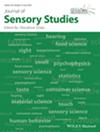Measuring the importance of olfaction in Chinese children: A psychometric study of the Chinese version of the Children's Personal Significance of Olfaction Questionnaire
Abstract
The Children's Personal Significance of Olfaction Questionnaire (ChiPSO) is a measurement tool for assessing the importance of olfactory information in children. Due to limited research on the importance of olfaction in Chinese children, this study aims to translate the ChiPSO into Chinese and validate this version, thereby examining its applicability within the Chinese context. The study involved 1015 participants aged 6–15 years, with confirmatory factor analysis (CFA) used to evaluate the questionnaire's factor structure, alongside tests for internal consistency, test–retest reliability, and concurrent validity. The results confirmed a robust three-factor structure (food, environment, and social) with adequate internal consistency and test–retest reliability. Furthermore, concurrent validity was confirmed through significant correlations with the Chemosensory Pleasure Scale for Children and the Body Odor Sniffing Questionnaire. In conclusion, this study effectively validated the ChiPSO-C, proving it to be a reliable instrument for investigating olfactory significance in Chinese children.
Practical Application
The Chinese version of the Children's Personal Significance of Olfaction offers a validated tool to assess the personal significance of olfaction in Chinese children. Researchers and educators can use this tool to better understand and support children who may rely more significantly on olfactory cues for learning and interaction. Furthermore, this tool facilitates cross-cultural research by providing a means to compare olfactory significance across different cultural contexts.

 求助内容:
求助内容: 应助结果提醒方式:
应助结果提醒方式:


